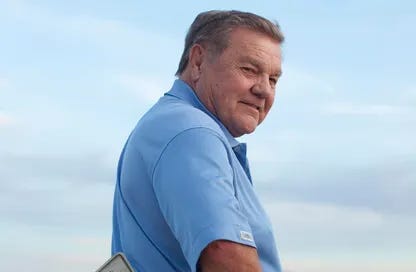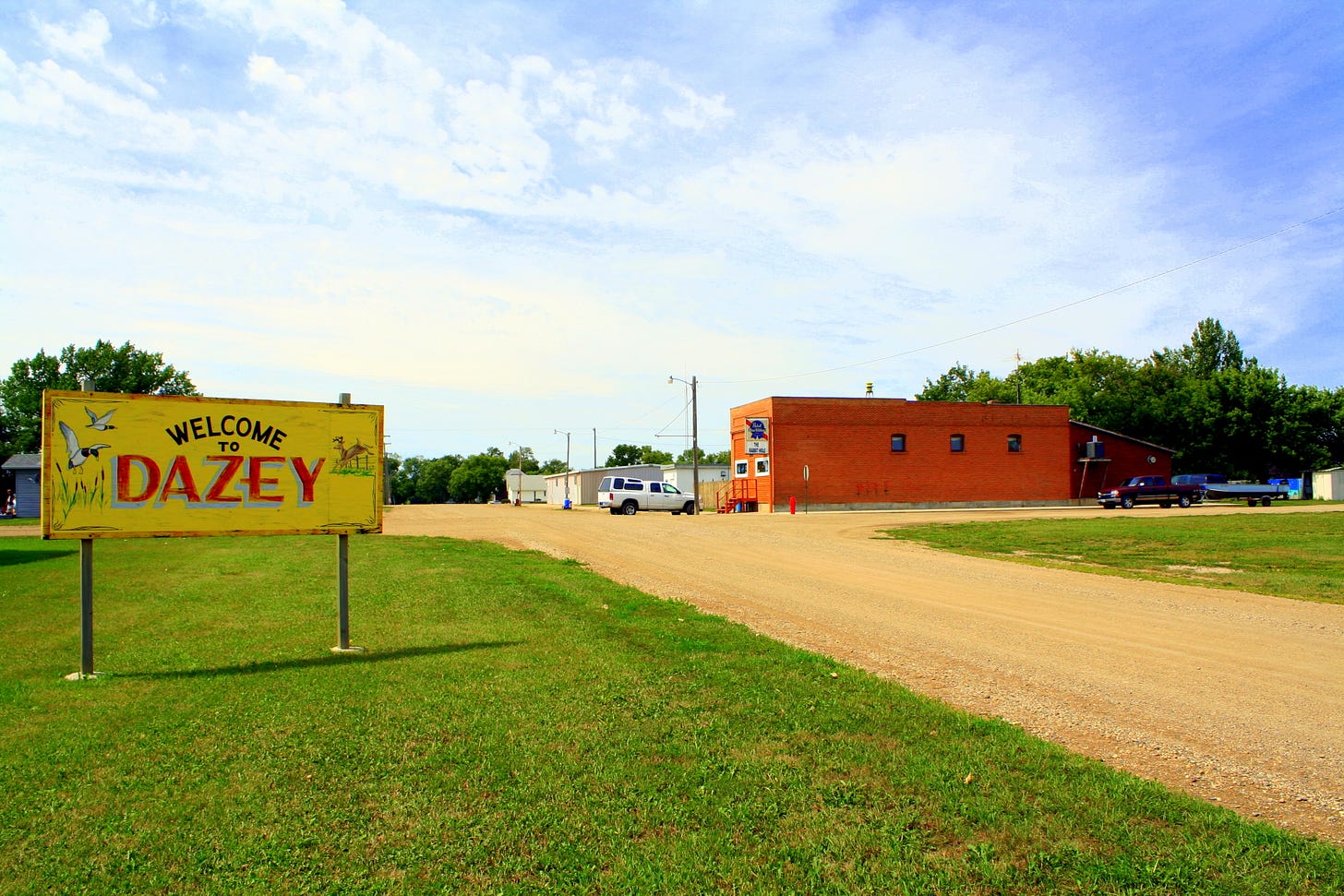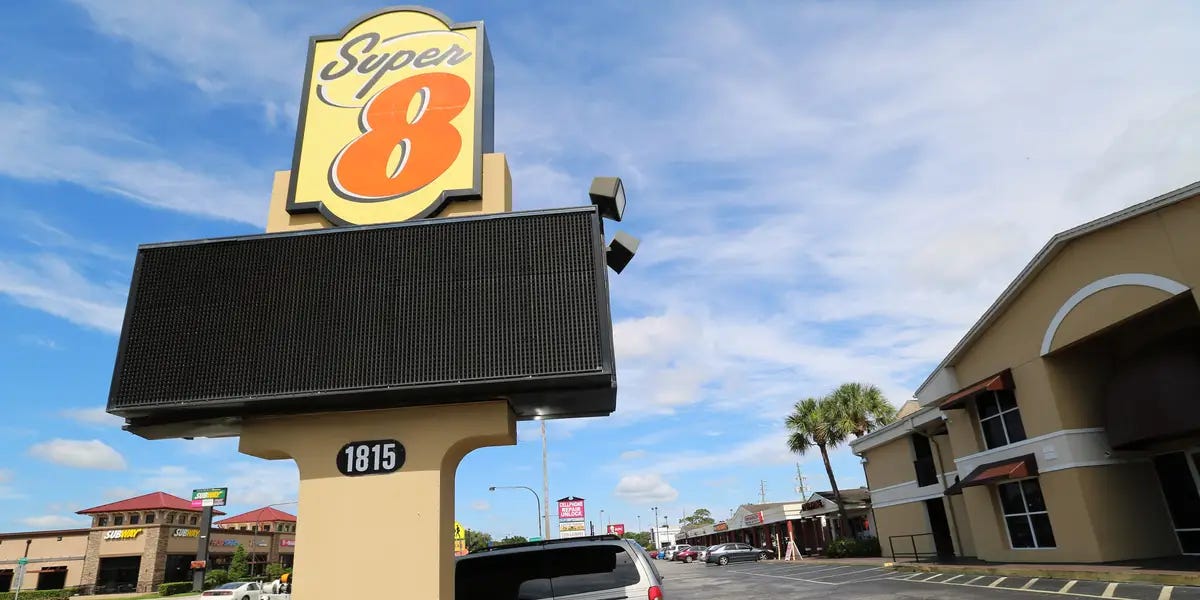The Motel Billionaire from North Dakota
What I Learned Studying Gary Tharaldson’s $1.2B Exit and How He Reinvested It
Welcome to Unfollow the Herd, the newsletter for people who want to stop trading time for money and start building wealth through ownership.
If you’re new here, join 5,400+ others learning about wealth creation every week.
Who is Gary Tharaldson?
Most people haven’t heard of Gary Tharaldson.
He didn’t raise from VCs. He never went viral. He didn’t care about being loud. He cared about building.
In 1982, he bought a Super 8 in Valley City, North Dakota. Just a basic motel in the middle of nowhere.
That one move turned into 480 hotels over the next 40 years. Then, in 2006, he sold 130 of them to Goldman Sachs for $1.2 billion.
But the part that really caught my attention? What he did after the sale.
He didn’t sit on a beach. He didn’t buy a sports team. He went back to work.
He rolled the money into land, ethanol, and commercial real estate. Real assets. Cash-flowing machines.
Today, Forbes calls him the richest man in North Dakota.
I spent a few hours going deep on how he pulled this off—and what we can take away from it. This isn’t just a cool story. This is a masterclass in compounding.
The Small-Town Start
Gary grew up in Dazey, North Dakota—a two-blink town with 200 people and more cows than cars.
No running water. No central heat. He worked on a neighbor’s farm for $50 a month as a teenager.
After college, he became a high school gym teacher. On the side, he sold insurance. He wasn’t chasing an empire. He was just trying to build a life.
Then he spotted something—a little motel off the highway in Valley City, ND. A Super 8. He didn’t have experience in hospitality.
❌ No MBA.
❌ No family money.
❌ No playbook.
Just a gut instinct that said: “I can run this better.” And he did.
He didn’t try to be fancy. He kept the rooms clean, the sheets tight, and the front desk sharp. He watched expenses like a hawk and stayed focused on occupancy. That Super 8 made money.
So he did it again. And again. At his peak, he was developing nearly one hotel a month.
In the end, he had 480 hotels built over four decades.
His Operating Philosophy Behind 480 Hotels
This part blew me away.
Gary didn’t scale by throwing people and money at the problem.
He scaled with discipline. Franchises were his secret weapon.
He didn’t waste time building a new brand—he partnered with ones people already trusted. Super 8. Comfort Inn. Holiday Inn. Fairfield by Marriott.
Let them bring the traffic. He focused on operations.
His Fargo HQ? It wasn’t some bloated corporate org chart. It was a tight crew. Small team. Big output.
He signed most of the checks himself. Knew the GMs. Watched RevPAR like a hawk. But he trained people well—and trusted them to run.
One investor called him a “lean execution machine.”
I love Gary’s story because this is how we’re building MAK Capital. A small, sharp team doing big things by staying focused on what matters.
The Big Payday: $1.2 Billion from Goldman Sachs
In 2006, Gary sold 130 stabilized hotels to Goldman Sachs’ Whitehall Fund for over $1.2 billion—cash.
It was one of the largest private hospitality transactions in U.S. history at the time.
Why those 130? Because they were clean. Cash-flowing. Turnkey machines. Goldman wanted yield. Gary delivered it.
But here’s what’s even more strategic:
He didn’t sell everything. He kept the development company. Kept the pipeline. Kept building. He turned a pile of stabilized assets into dry powder—then redeployed it.
Where He Put the Money
Here’s where it gets really good. Most people take a $1B check and disappear. Gary reinvested all of it.
Land
He bought thousands of acres across North Dakota, Minnesota, and even Arizona. He didn’t just sit on it—he treated land like a bank.
Optionality forever.
Ethanol
He built Tharaldson Ethanol—now producing 175 million gallons per year.
Consumes 120,000 bushels of corn a day. Supplies fuel across the Midwest.
Commercial Real Estate
Strip malls. Warehouses. Office parks. More hotels. Over and over again.
Today, Tharaldson Companies manages $1.3B in assets. Team of 75. Based in Fargo. That’s what you call quiet scale.
I think about this every time we do a deal. Can this be the platform that funds the next 20 years?
His Ethanol Bet Wasn’t Random
A lot of people assume this was luck. It wasn’t.
Gary saw ethanol mandates coming. He understood policy. Understood commodity inputs. So he bought the land, built the plant, and vertically integrated.
By 2017, that plant had already produced over a billion gallons of fuel. Today, it’s one of the most efficient ethanol operations in the country.
He’s now adding carbon capture, extracting high-protein feed byproducts, and selling CO₂ credits. He’s turning corn into 5+ revenue streams.
That’s what you call a moat.
Major Financial Highlights
Here’s a breakdown of his earnings and holdings over his career and across his portfolio.
(Sources: Tharaldson Companies; Agweek; Forbes; Zippia)
The Billionaire Next Door Vibe
Gary still lives in Fargo. Has a $11M house in Detroit Lakes too. Drives a pickup.
Here’s what he says:
“We didn’t have a mission statement. We just worked hard.”
“I never thought about being wealthy. I just liked to work.”
That definitely resonates with me. That’s what I want to be.
Not a brand. Not a guru. Just a builder.
Gary didn’t scale with threads or followers. He scaled with execution. No crypto. No fake SaaS multiples. No viral clips.
He built a 10-figure business off clean sheets and quiet rooms. That’s what wealth actually looks like.
Everyone’s chasing 10x ideas. Gary built a 10x life on one really good/strategic idea and scaled from there.
What I Took Away
He never chased sexy. He chased scalable.
Gary didn’t spend his time trying to be impressive. He picked businesses that were proven, that worked in any economy, and that could scale with systems. Motels, land, ethanol—they aren’t trendy, but they print cash. That’s the model.He didn’t exit to retire. He exited to redeploy.
When most people hit a big payday, they slow down. Not Gary. That $1.2B wasn’t an endpoint. It was dry powder. He turned that capital into even more control, cash flow, and long-term upside. That’s how real operators think.He built infrastructure, not noise.
Instead of chasing flash, he built things that quietly produce income—every day, every week, every year. Things that still pay you even when you’re asleep or on vacation. It’s not sexy. It’s sustainable.He stayed private and in control.
He never diluted. Never gave up ownership. He never had to answer to a board or PE firm. He called the shots, reinvested on his terms, and grew a portfolio that works for him. That’s leverage most people will never know.
Final Thoughts
When I look at guys like Gary, I don’t see someone chasing headlines or trying to impress anyone. I see what real winning looks like.
He’s steady. Reliable. Built to last.
He didn’t get there with some flashy launch or viral moment. He built it the old-fashioned way—one simple, unsexy deal at a time. Quietly stacking wins.
He doesn’t care if you know his name, instead he only cared about the work.
So if you’re building something right now and it feels a little too simple? That might actually be your superpower.
Because simple scales. And simple endures.
P.S. Want to accelerate your path to financial freedom?
Here are 3 ways I can help you:
👉 Download the free guide – “21 Ways to Build Wealth with Real Estate”
A tactical breakdown of the exact principles I used to go from pouring concrete to building a $60M+ real estate portfolio.
👉 Improve your investing skills – Self-Paced Real Estate Courses
A step-by-step blueprint for building passive income as an LP investor, scaling your real estate portfolio, and escaping the paycheck treadmill.
👉 Apply for 1:1 coaching – Work with me 1:1 to start building wealth with real estate
If you're serious about buying back your time and want guidance from someone who's done it, let’s work together.











Man, I love his approach. Regular people need to more about him and people like him. So much more than what we think is possible.
Great case study ! Thanks